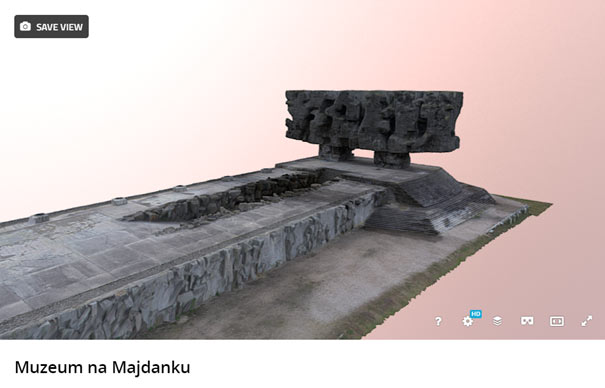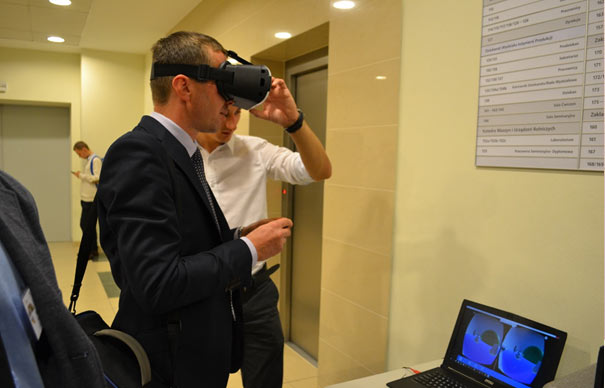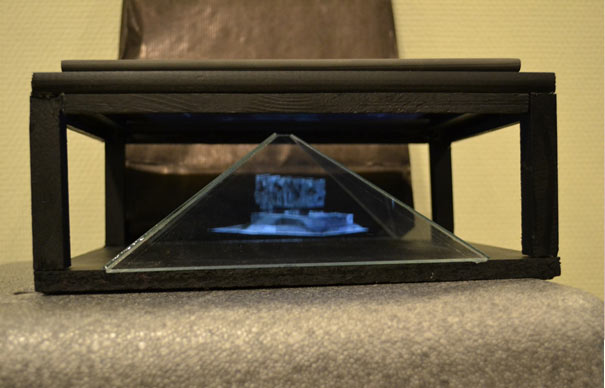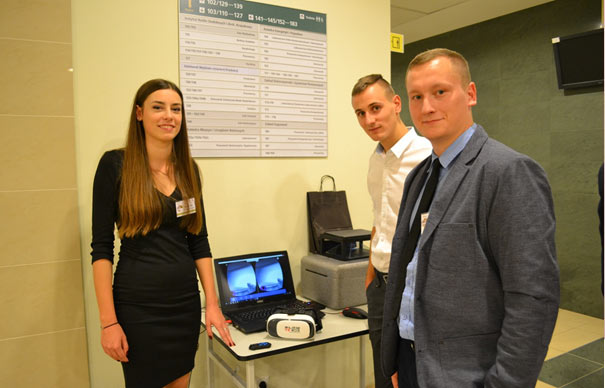Between 9-11 October, the 3rd Scientific and Technical Conference entitled "New directions of research in environmental protection and shaping as well as geodesy and spatial management" was held at the University of Life Sciences in Lublin.

During the conference, students from the “METIRI” Scientific Association of Geodesy and Cartography (Kamil Borczyk and Roman Hałaburda) in cooperation with Monika Pizoń (the “EQUATOR” Geodetic Scientific Association from Lublin) prepared a presentation and a poster entitled “Technological aspects of developing a 3D model with the use of BSL and methods of its presentation”.
For the needs of the presentation, a 3D model was developed of the Monument of Fight and Martyrdom located in the Museum at Majdanek in the former concentration camp in Lublin. A three-dimensional visualisation was developed with the method of close range photogrammetry with the use of unmanned aerial system DJI Phantom 4. In addition, measurements of sixteen photo points were made with the GNSS - RTK receiver for precise georeferencing of the model. The photo points were specially prepared photogrammetric shields located around the object under study as well as fixed elements of the infrastructure such as drainage catch pits or concrete slabs fractures. Everything was developed in the ContextCapture software by Bentley. The model generated from 230 photographs from a camera inclined vertically downwards and at an angle was characterised by the accuracy of +/- 3 cm in control points. This is compliant with the accuracy of the GNSS RTK receiver used for measurement of the photo points.
After the preparation of the model, the methods of its display were prepared as well as a poster and a presentation, which the students delivered on stage. From the presentation, the conference participants found out about the manner of performing unmanned flights in an autonomic mode in accordance with horizontal profiles and manually - in accordance with vertical profiles. Next, they were informed how photo points should be located and why it is worth using fixed elements of the infrastructure of the object under study (concrete slabs, unlike photogrammetric shields, will not be moved by wind, which could spoil the whole study). Further points of the presentation included a discussion of the individual steps of processing in the software as well as the developed presentation methods, including Virtual Reality prepared thanks to the support of Mr Bartosz Muczyński, MSc., a hologram, publication on www.sketchfab.com, a video and a 3D print. It is worth mentioning that the prepared model was transferred to the management of the Museum at Majdanek to be printed on a 3D printer, thanks to which also blind people will be able to get acquainted with the shape of the monument developed by the students of the Maritime University of Szczecin and the University of Life Sciences in Lublin.
The 3D model presentation methods discussed during the delivery session could be examined in detail during the poster session. Then, the stand of the representatives of METIRI Scientific Association and EQUATOR Geodetic Scientific Association was continuously visited by numerous groups of conference participants. The project enjoyed huge interest and, thus, the whole hourly poster session was devoted to answering additional questions and exchange of experience with other conference participants.
The other conference works were focused on the applications supporting the environment and its protection (water and sewage management, environment shaping and forestry, eco-power engineering) as well as the subject matter of geodesy and spatial development, where the representatives of the Maritime University of Szczecin also made their presentation. Participation in this event is an educational experience and a greater chance for students from the METIRI Scientific Association for presentation of their studies, confrontation with the opinions of scientists from all around Poland and enter into new contacts, which may result in further joint projects. We are glad to have been received so warmly and invited to more conferences by various scientific centres, which the “Metiri” Scientific Association will definitely attend.
Kamil Borczyk
Roman Hałaburda





